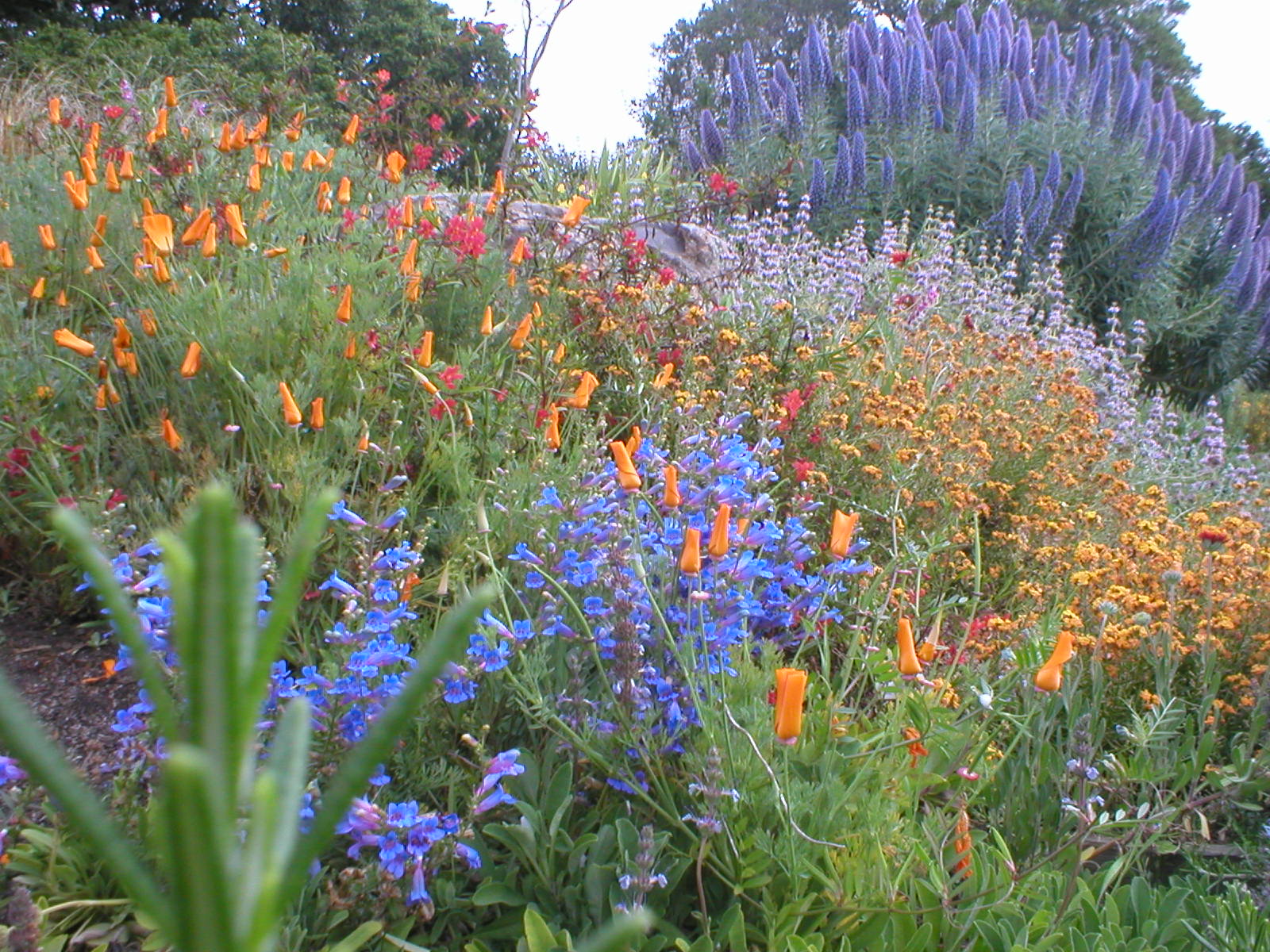by Annie Spiegelman, the Dirt Diva
I learned about happy-go-lucky native plants about five years too late. During those first few amateur gardening years, I was naively determined to have the perfect English cottage garden. I felt it was my civic duty to counteract my suburban neighbors who seemed to be a bit obsessed with boats, mufflers, disturbing gnomes and fake deer displays on their front lawns. I was obsessed with roses, especially hoity-toity English roses. But once my son was born and all of my spare time was no longer spare, I had less and less energy to maintain my garden.
I remember one particular January morning. I was feeding my infant son and looking out the kitchen window, in a sleep-deprived daze, at the 50-something roses in my yard that needed pruning. I swore I heard them calling my name, till I realized that it was just my poor neglected cat meowing to be fed. Fearful of being reported to the Humane Society or to the Master Gardeners, I tossed the kid in the backpack, pruned all 50 rosebushes and fed the cat. Then I collapsed. One week later I joined a group of Marin Master Gardeners on a class field trip to visit Mostly Natives Nursery in West Marin. And that is when my landscaping life changed forever. I blissfully drove home with a pickup truck full of native plants.
One of the greatest assets of native plants is that they are user-friendly; a good many of them are drought-tolerant, have minimal needs and will not be wailing for your attention on a brutally hot and dry August day. No “I need a drink! I’m shvitzing over here! And, I hate you!” that you get from some other sections of your yard. California natives are naturally adapted to the California dry summer climate and winter rains. Since many of them require little water, most can confidently survive on winter rainfall alone. (Alas, this is true only after they are established. You’ll need to water them regularly the first year).
October is considered the best time to plant natives, as the winter rains help the plants get their root systems established. But I’m giving you a pass to plant them now if you are in need of drought-tolerant and low-maintenance plants for your yard. To combat the hot summer weather, I plant them with a layer of compost and mulch on top to keep them cool and retaining water.
Native plants also attract birds and butterflies because they’re rich in nectar and/or seeds. Many have sweet scents reminiscent of the Wild West. For example, the various salvias I have in my front yard attract beneficial insects and also smell campy—as in camping. (Depending how you feel about camping, this could be good or bad). One of my favorites is Salvia clevelandii. Named in Southern Caifornia in 1874 in honor of the plant collector Daniel Cleveland, this evergreen shrub grows 3 to 5 feet wide and high with spiky whorls of amethyst flowers that bloom in June or July. No water, no pruning, no attention. This plant is happy to please.
You may want to pick up a copy of Designing California Native Gardens by Glenn Keator and Alrie Middlebrook, or The California Native Landscape by Greg Rubin and Lucy Warren. Both of these books have beautiful photos and fabulous design ideas. Plant some natives and then sit back in your lounge chair and enjoy the summer!
Tell Annie about your favorite native plants at th*********@ea*******.net.








